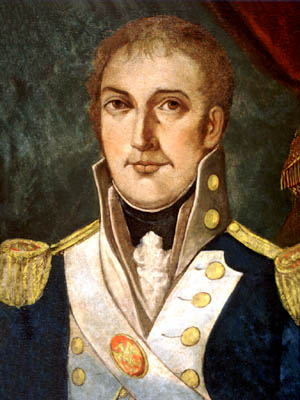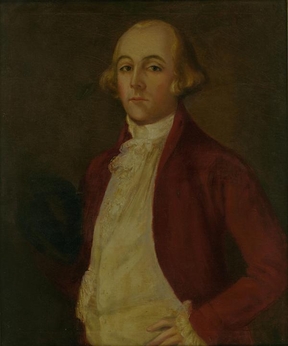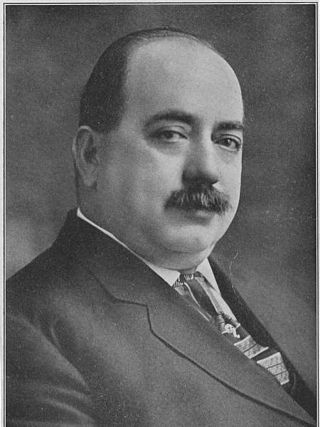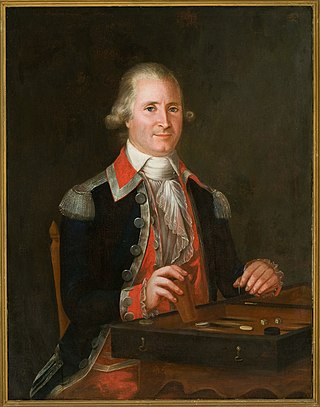Related Research Articles
Daniel Clark was an Irish-American politician who served as the first Delegate from the Territory of Orleans to the United States House of Representatives. Born in Sligo, Ireland, he was reportedly educated at Eton College in England.

The Territory of Orleans or Orleans Territory was an organized incorporated territory of the United States that existed from October 1, 1804, until April 30, 1812, when it was admitted to the Union as the State of Louisiana.

William Charles Cole Claiborne was an American politician and military officer who served as the first governor of Louisiana from April 30, 1812 to December 16, 1816. He was also possibly the youngest member of the United States Congress in the history of the United States, although reliable sources differ about his age.

James Mather was mayor of New Orleans from March 9, 1807 to May 23, 1812, at which time he resigned. Mather's five-year administration overlapped, by a few weeks, the transition from the United States' Territory of Orleans period to the State of Louisiana's antebellum period, with New Orleans serving as the first state capital.

Count Louis Philippe de Roffignac was a wealthy Louisiana merchant, banker, member of the state legislature, and the tenth individual to serve as Mayor of New Orleans, in 1820-1828.
Charles Genois was the Mayor of New Orleans from May 1838 to May 1840. Genois's brief tenure has been characterized as feeble because of an economically stagnant period which followed the boom of his predecessor's term. "It was, however, a model of efficiency and unswerving integrity." Genois's administration dealt with the consequences of the city's heavy borrowing; reforms and improvements were postponed.

The post of Mayor of the City of New Orleans has been held by the following individuals since New Orleans came under American administration following the Louisiana Purchase — the 1803 acquisition by the U.S. of 828,800 square miles (2,147,000 km2) of the French province La Louisiane. In all mayoral elections since 1930, New Orleans has used a two-round system with a preliminary round and a runoff if no candidate reached a majority in the first round. All mayors of New Orleans since 1872 have been Democrats.

Jean Étienne de Boré was a Creole French planter, born in Kaskaskia, Illinois Country, who was known for producing the first granulated sugar in Louisiana. At the time, the area was under Spanish rule. His innovation made sugar cane profitable as a commodity crop and planters began to cultivate it in quantity. He owned a large plantation upriver from New Orleans. De Boré's plantation was annexed to the city of New Orleans in 1870, and is now the site of Audubon Park, Tulane University, and Audubon Zoo.

James Pitot (1761–1831), also known as Jacques Pitot, was the third Mayor of New Orleans, after Cavelier Petit served for a ten-day interim following Mayor Boré's resignation. Because he had already attained American citizenship, he is sometimes called New Orleans' first American mayor.

Daniel Carmick was an officer in the United States Marine Corps.

Martin Behrman, an American Democratic politician, was the longest-serving mayor in New Orleans history.

Paul Capdevielle was an American politician who was mayor of New Orleans, Louisiana, from May 9, 1900, to December 5, 1904.

Uptown is a section of New Orleans, Louisiana, United States, on the east bank of the Mississippi River, encompassing a number of neighborhoods between the French Quarter and the Jefferson Parish line. It remains an area of mixed residential and small commercial properties, with a wealth of 19th-century architecture. It includes part or all of Uptown New Orleans Historic District, which is listed on the National Register of Historic Places.

The Pitot House is a historic landmark in New Orleans, Louisiana, and is listed on the National Register of Historic Places.

Charles Laveau Trudeau (1743–1816) also known as Charles Trudeau dit Laveau or Don Carlos Trudeau or Don Carlos Trudeau Laveau, served as the acting mayor of New Orleans in 1812. His name includes a French honorific, dit Laveau, a tradition often used to carry forward the name of a revered woman in the family; in this case Charles's paternal great-great-grandmother, Marie Catherine de Lavaux.
The Creoles of color are a historic ethnic group of Louisiana Creoles that developed in the former French and Spanish colonies of Louisiana, Mississippi, Alabama, and Northwestern Florida, in what is now the United States. French colonists in Louisiana first used the term "Creole" to refer to people born in the colony, rather than in Europe, thus drawing a distinction between Old-World Europeans and Africans from their descendants born in the New World. Today, these Creoles of color have assimilated into Black American culture, while some retain their distinct identity as a subset within the broader African American ethnic group.

Bayou St. John, also known as Faubourg St. John, is a neighborhood of the city of New Orleans. A subdistrict of the Mid-City area, its boundaries as defined by the New Orleans City Planning Commission are: Esplanade Avenue to the north, North Broad Street to the east, St. Louis Street to the south, and the Bayou St. John waterway, the neighborhood's namesake, to the west. The neighborhood was built along what is known as the Esplanade Ridge. The Esplanade Ridge Historic District was added to the National Register of Historic Places in 1980 and includes much of the neighborhood.
The following is a timeline of the history of the city of New Orleans, Louisiana, USA.

The 1884 Louisiana gubernatorial election was the second election to take place under the Louisiana Constitution of 1879. Incumbent governor Samuel D. McEnery had been elected Lieutenant Governor in 1879, succeeding Gov. Louis A. Wiltz upon the latter's death in 1881. With assistance from the New Orleans "Ring," McEnery defeated a challenge for nomination from White League chieftain, Frederick Nash Ogden. The election saw widespread intimidation of African-Americans which guaranteed the election of the Democratic nominee. As a result, McEnery was elected Governor of Louisiana.
Cavelier Petit was an American politician who served as acting mayor of New Orleans from May 26, 1804 to June 5, 1804. Petit was described by writer Alcée Fortier as being "prominent in the affairs of the colony about the time it passed into the hands of the United States".
References
- ↑ Johnson, Jerah (1995). "Dr. John Watkins, New Orleans' Lost Mayor". Louisiana History: The Journal of the Louisiana Historical Association. 36 (2): 187–196. JSTOR 4233177.
- ↑ John Kendall, History of New Orleans, 1922, Chapter IV, "Establishment of the Municipal Government"
- ↑ Kendall, 1922, Chapter V, "The First Two Mayors" (sic, refers to Watkins & Mather)